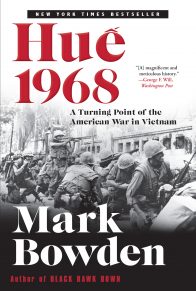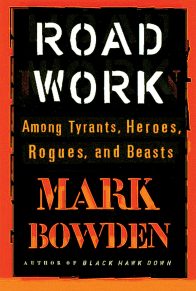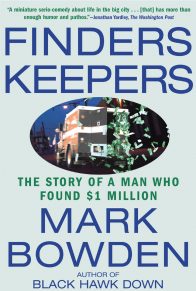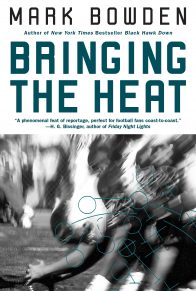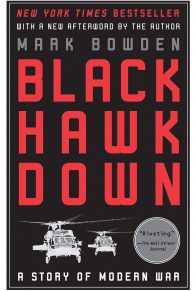It was freezing in Yankee Stadium. A balmy Sunday afternoon had faded into night, three days after Christmas, 1958. When the football game had started, nearly two hours earlier, the mildness of the day had surprised the players, particularly the New York Giants. They had played twice here in the preceding two weeks against the Cleveland Browns in bitter cold, first in a blizzard, and then in such a deep freeze that the field felt like marble. There were still wet patches here and there, but the turf was mostly dry and soft. Anticipating another frigid contest, the grounds crew had given the field a protective coating of brown mulch that contained manure, which warmed as it decomposed and gave off a pungent odor, flavoring the fabled sports arena with the aroma of a cow pasture. Every scramble kicked up clouds of fragrant dust.
But as the game moved into its third quarter and the sun dropped behind high stadium walls, winter was back. High above the grandstand, with its graceful white-picket-fence frieze, banks of arc lights lit the field brightly.
The 64,185 paying customers (considerably fewer than a full house) peered out at the contest from frigid blackness. The Giants wore their dark blue helmets with the single red stripe and blue wool jerseys with white numbers, and the Baltimore Colts, with the familiar horseshoe emblem on their white helmets, were in badly soiled whites with blue numbers and trim. This was the colorful spectacle for those present, but for the far bigger part of its audience, the most celebrated game in football history would be remembered primarily in black and white.
Spooky black and white. An estimated forty-five million people, the largest crowd to ever witness a football game, saw spectral players battling in shades of white and gray against a stark black backdrop. National Football League rules had forbidden local television stations from broadcasting the championship game, but many determined New Yorkers, particularly those living north of the Empire State Building, happily discovered that they could pick up the signal only slightly impaired from over the southwest horizon, beaming from Channel 3 in Philadelphia. The country was transfixed. President Eisenhower had a clear signal on his farm in Gettysburg, Pennsylvania, where he was watching while playing bridge with friends, including William E. Robinson, the president of Coca-Cola. Brooks Robinson, the second-year third baseman for the Baltimore Orioles, was watching at Fort Hood, Texas, where he was doing his off-season National Guard duty. Ernie Accorsi who would later become general manager of the Cleveland Browns, the team that had fallen twice in the two previous weeks to the Giants, was in a clubhouse on a golf course in Palm Beach, Florida, where he had decided to forego finishing his round in order to watch. Pete Rozelle, a public relations man for the Los Angeles Rams who had recently been promoted to general manager, watched from his team’s offices, a little sore that the Rams wouldn’t spring to fly him out to see the championship game live. Auto mechanic Ed Chaney, Jr. was watching from Henry Mack’s Pub, his favorite bar in Glen Burnie, Maryland, along with a few dozen other rabid Colts fans. Chaney had to work that evening, but had set aside this afternoon for the game. At the home of the famous doggerel poet and Colts fan Ogden Nash in suburban Baltimore, the entire Nash family was gathered in the living room. At a novitiate in Baltimore, burdened with a mean-spirited local ecclesiastical admonition against watching the game on TV, the obedient but clever Mother Superior draped a blanket over the set—there was no rule against listening.
Many of the viewers just beginning to tune in were not regular watchers of pro football, and they were seeing something starkly different than the traditional college games played on sunny autumn afternoons. This was more like mortal combat from some dark underworld. As in some medieval rite, the players on both sidelines were draped in long capes. A master cinematographer could not have lit the scene more dramatically.
In the shadow of the stands, men wore long wool overcoats and gloves. Many wrapped wool scarves over their heads, covering their ears, and scrunched fedoras on top of the scarves. They smoked cigarettes or cigars, and when they cheered or spoke their faces would momentarily cloud in smoke and steam. Beneath the red, white, and blue bunting draped from the second tier, the stands smelled of tobacco and beer and occasionally a whiff of whiskey or rum or the pungent stab of a struck match. Nineteen-year-old William Gildea, who would grow up to be a sportswriter for the Washington Post, was there with his father, sitting high over one of the end zones. They had been going to Colts games together since the first one the team had played in 1947, and had taken the train from Baltimore to New York the day before.
Behind the end zone on the eastern side of the stadium, out where the left-field bullpen was during baseball season, stood Neil Leifer with his Yashica Mat twin lens reflex camera. It was Neil’s sixteenth birthday, and he was spending it the way he had spent every Sunday afternoon that season. He had joined a camera club at the Henry Street Settlement House, to where the camera and film he carried had been donated. The club had taught him to shoot, develop, and print his own pictures, and he had discovered a potential market for them with the magazines and wire services around town. Neil knew their deadlines and he had shopped his work after every home game. So far he hadn’t had any luck, but this was a big game. He had to be on the field for the shots he wanted, but the club wasn’t handing out sideline passes to teenagers with borrowed cameras. Neil was tenacious, though. He had learned that before every game, busloads of disabled veterans arrived at the loading ramps outside Yankee Stadium’s outfield walls. There was no place for men in wheelchairs up in the stands, but the Giants allowed them to watch from their chairs against the outfield wall behind the end zone. They even provided blankets and hot coffee. When the buses started arriving from the various veterans hospitals in the hour before kickoff, there was always a need for able-bodied volunteers to push them into the stadium. Neil knew that the stadium guards and cops, in return for his help, would let him stick around. Sometimes they would even let him creep up the sidelines, although usually the accredited photographers would kick up a fuss and he would have to come back. The market for still shots from the game was small, and the pro shooters didn’t welcome competition, even from a sixteen-year-old on his birthday.
The surly culture of beery male boorishness that would come to typify football crowds had not yet taken hold, so there were many women in the stands. They, too, wrapped scarves around their heads and across their faces, and huddled under blankets. Joanne Kemp, the young wife of Giants back-up quarterback Jack Kemp, was there, pregnant with their first child, Jeff, who would grow up to be an NFL quarterback. Marcia Hersh was huddled under a blanket with her mother. She was sixteen, and had come up from Baltimore on the bus with a big group of Colts rooters who were now in the upper deck over the fifty-yard line. Her father, Abe, who owned a furniture store, was so excited that he screamed himself hoarse. Years later Marcia would remember his eyes glowing with excitement as he had rasped to her, “History is being made!”
It was hard not to sense it.
Consider the men on the field. Many were already famous; others were just starting their careers. Among the Giants were Roosevelt Brown, Rosey Grier, Frank Gifford, Sam Huff, Emlen Tunnell, Mel Triplett, and Andy Robustelli. Kicking for New York was Pat Summerall, who would become, as would Gifford, among the most famous TV faces and voices of pro football. Roaming that Giants sideline were future Hall-of-Fame receiver Don Maynard, and Jack Kemp, the eventual AFL quarterbacking star, future congressman, U.S. Secretary of Housing and Urban Development, and vice presidential candidate. For the Colts, there were Johnny Unitas, Raymond Berry, Jim Mutscheller, Lenny Moore, Alan Ameche, Art Donovan, Jim Parker, Ordell Braase, Bill Pellington, and Gino Marchetti. And the men on the sidelines were every bit as notable, with three who would become icons of the pro game. On the Giants’ side of the field, coaching the offense was Vince Lombardi, who was just a few years away from building his dynasty in Green Bay, and coaching the defense, Tom Landry, who would shape the Dallas Cowboys into another NFL power. Coaching the Colts was Weeb Ewbank, who in his career would steer two different NFL franchises to championships. It was the greatest concentration of football talent ever assembled for a single game. On the field and roaming the sidelines, including Giants owners Wellington and Jack Mara, were seventeen future members of the NFL Hall of Fame.
In 1958, the great postwar boom was still in full stride, but some new and discordant notes had sounded. A year earlier the Soviet Union had orbited Sputnik, a technological stunt that disturbed the smug certitude of American power and demonstrated that the Russian foe could deliver its nukes anywhere on the globe. The vast Kansas night sky where President Eisenhower had grown up looked a little bit less friendly. There was talk of a “missile gap.” The National Aeronautics and Space Administration was created that year.
The Ed Sullivan Show was the most popular hour of television. The tube was still full of cozy half-hour programs that depicted idyllic families enjoying the country’s new suburban lifestyle, programs like The Adventures of Ozzie and Harriet and Leave It to Beaver, but the strong cultural fabric of self-satisfied consumerism, traditionalism, and sentimentality was starting to unravel. Playboy magazine was a huge hit, Andy Warhol was working as an illustrator in Manhattan, and the country had watched with horror in its living rooms as racist mobs taunted nine black teenagers trying to integrate a high school in Little Rock, Arkansas. Senator John F. Kennedy, who had already begun campaigning in earnest for the White House, was a frequent spectator at Giants games in Yankee Stadium. A guerrilla organization called the Viet Cong had begun to battle the anticommunist government of South Vietnam.
Just over the horizon was a decade of restless social, political, and cultural upheaval, but none of that was obvious yet. Americans had never been more affluent, and had never had more leisure. And pro football, which was about to catch hold, would just shoulder on through all this coming change, growing ever more popular and ever more rich. The audience and the league were on the cusp of an explosion that would quickly turn this era of pro football into a piece of a simpler past.
It would be this game that would provide the spark.
Early in the third quarter, the Giants had their backs to the wall, just as they had all season. They were an established NFL power in America’s greatest city, with a lineup of star athletes expected to dominate the league for years to come, but this year had been a gutty, bitter struggle. They had the best defense in the league statistically (the Colts were rated second), but an inconsistent offense. Baltimore’s offense was the league’s best. So New York could ill afford to fall far behind, and they were on the verge of doing just that, to a young team of castoffs from a small city that had never participated in a national championship in any sport. Baltimore was a blue collar train stop between Philadelphia and Washington, steel mills and dock works and a grimy inner harbor slick with oily urban slough. But the comparative wealth and glamour of New York City meant nothing on the gridiron, where the Giants had started the second half behind by eleven points, 14-3, and were now backed up to their own five-yard line.
They had purchased this toehold with a tenacious goal-line stand. The Colts had begun the second half by driving the length of the field with ease in just five plays. The cunning play calling and precision passes of Baltimore’s sensational quarterback, Johnny Unitas, who had been named the league’s most valuable player the preceding year, confused the Giants’ vaunted defense again and again, but with their backs to the goal line, facing the prospect of falling hopelessly behind, the defenders had a slight advantage. Unitas’s receivers had less room to maneuver. Lindon Crow, the Giants’ wily cornerback, no longer had to contend with his constant worry that Colts speedster Lenny Moore would turn upfield and leave him behind, and the other cornerback, Carl Karilivacz, knew the Colts’ shifty left flanker Raymond Berry would not have time for anything fancy. The battle was simplified; it was muscle on muscle. And with the New York crowd amping up its glee with each failed Colts attempt to push across the goal line, the Giants had held.
The Colts had decided to go for it on fourth down. A team that cannot push in from the one-yard line in four tries begins to feel overmatched. His linemen blowing and spent after the third effort, Unitas had elected trickery. He called an option pass around the right end for fullback Alan Ameche, who raced for the right corner of the goal line with Giants defenders in hot pursuit. The play called for one of Ameche’s three blockers, tight end Jim Mutscheller, to slip off his block and step into the end zone, at which point Ameche would surprise his pursuers by tossing a short touchdown pass. It had worked precisely as drawn up—Mutscheller was standing unattended in the end zone just five yards away—but in the din at that corner of the field, Ameche had misheard the call. The option pass, which Baltimore had not run at all that season, was called “648,” as opposed to “48,” the standard right sweep. Ameche assumed Mutscheller would hold his block on linebacker Cliff Livingston as he bulled his way in for the score. Instead, when the tight end let Livingston go, the delighted linebacker had a free shot at the running back. As Mutscheller stood watching in the end zone, waiting for the toss, Livingston dropped Ameche hard on the five-yard line.
It set up one of the most dramatic turning points in football history. How best to recapture the moment? The television broadcast of the game is lost to history. Most New Yorkers were following the old-fashioned way, on the radio. The tinny roar of the crowd, the cigarette and appliance commercials, the jingles and slogans—“Call for Phillip Morris!” and “There’s a lot to like in a Marlboro / Filter, flavor, flip-top box!”—the distant sound of a marching band, all of it framing a smooth river of play-by-play from NBC’s Joe Boland, the sounds were as familiar as a fire in the hearth and the smell of Sunday dinner. Boland had a perfect radio voice, warm, lightly southern, slightly nasal, and unfailingly upbeat, and he delivered a narration so mannered and professionally modulated that it was a kind of song:
—The New York Giants defense is great! They hold them off! Baltimore leading fourteen to three had a chance to get some icing on the cake as they marched steadily down to the New York one-and-a-half-foot line, and there the New York defense manifested itself! Bill, wasn’t that a dandy?
Boland’s broadcast partner was Cleveland Browns announcer Bill McColgan, who in his rush to comment revealed his unfamiliarity with the Colts. He confused the actual runner on the futile fourth-down play, Ameche, with the Colts’ other running back L.G. Dupre, and, ignorant of the play-call mix-up, lauded Livingston for making the play:
—It sure was, it looked for a moment as if Dupre was going to get around that right end but Livingston was wise to the call and he was in there and made a fine defense play to stop it. So now the Giants’ offense will have a first and ten on their own five.
The goal-line stand lifted the hearts and voices of the New York crowd, and it gave the Giants a reprieve. The crowd noise, which had prevented Ameche from hearing the play call, now surged again. New York’s canny veteran quarterback, the taciturn old marine Charlie Conerly, whose ruggedly handsome features would become famous as the Marlboro Man, trotted out, shedding his blue cape and wading into the chill. He had the whole field stretched out before him, and a Colts defense that had not shown much give.
Looking on from the owner’s box in the sheltered mezzanine with his son and daughter, no doubt praying for a Giants comeback, was Bert Bell, the league’s rotund, benevolent, and long-suffering dictator. Bell had been nursing the sport along for more than a decade, drawing up each season’s complicated schedule by hand on the dining room table of his house in the Philadelphia suburbs. He had persuaded the tight-knit club of cut-throat team owners to accept numerous compromises for their mutual benefit, and the reforms had paid off. Total attendance was the highest it had ever been in the league’s thirty-eight years, closing in on three million, and nearly all twelve of the league’s teams were in the black—only four had been making money when Bell had taken over the league in 1946. A big round man with a broad, fleshy face and a double chin, he was gruff, gravel voiced, earnest, and well-liked by owners, coaches, and players. He ran the league like one big college team, meeting with the players before every season and handing out his phone number, encouraging them to call him directly in Philadelphia if they had any problems. Many did so, and Bell took their complaints and suggestions seriously.
He was self-made, in a peculiar sense, because by any social measure Bell was aggressively downwardly mobile. He had been born de Benneville (note the small “d”) Bell, son of a blue-blood Philadelphia Main Line family. His father was a former Pennsylvania attorney general and his brother was one of that state’s Supreme Court justices. Young de Benneville himself attended a private prep school and the Ivy League University of Pennsylvania (where his father was a trustee), but along this gilded path he had discovered the gridiron, embraced its blue-collar ethic, and never looked back. He became “Bert,” adopted a tough-guy, blue-collar manner, and somehow acquired an accent that was more Brooklyn than Brahmin, dropping his g’s and abandoning learned syntax—as New York Times man Al Hirshberg put it, “He talks like a dock walloper.”
Bell played football in college and, after several misspent postgraduate years squandering his family’s money—accumulating drinking and gambling debts totaling $50,000—he straightened out, married, gave up drink, and found a home in the professional game. The former gambler now kept a close eye on the oddsmakers, keen for the slightest hint of meddling with honest competition, and to fend off would-be fixers he hired former FBI agents to police every team. He weathered competition from an upstart rival league, the All-American Football Conference, and corralled it with a merger—the Baltimore franchise emerged from that maneuver. He instituted “free substitution” to improve the quality of play, and crafted draft rules that allowed the teams with the worst records to have first picks of the emerging college football stars each season. If a team owner complained about Bell’s frequent and often summary rulings, the commissioner was fond of invoking with stern finality, “Article 1, section 14, paragraph B.” He knew full well that nobody knew the league’s bylaws better than he did. The passage read, in part, “The commissioner is authorized to cancel a contract for any action detrimental to the welfare of the National Football League,” a relatively narrow prerogative, but rules are meant to be interpreted, and the commissioner of football interpreted them broadly and enthusiastically. He wielded “1-14-B” like a cudgel, and found that so long as the league prospered, nobody complained.
He had no rooting interest in this Colts-Giants contest, except that it stay close. Despite Bell’s accomplishments, pro football still lived in the long shadow of baseball. No matter how good the games were, the NFL was still just a diversion during the long cold months of baseball’s annual hiatus. The Giants played in Yankee Stadium. The nation was attuned to the rhythms of the summer game, which dwarfed football in ticket receipts and national attention.
Newspaper coverage of football was often relegated to the inside pages, and then, suddenly, there wasn’t even that—in mid-December, 1958, New York’s newspapers were shut down for more than two weeks by a strike. The lack of newsprint ballyhoo had contributed to poor ticket sales in the past week—there were alarming pockets of empty seats—but that wasn’t the only problem. It wasn’t the first time the championship game had failed to attract a full house, and Bell knew that if you couldn’t do it in New York it was not a healthy sign.
Still, there was TV. This was the third time the NFL Championship game had been on national television, and each year the audience had grown. The number of Americans with sets was exploding, from a mere twelve thousand in 1946 to four million just four years later. When World War II ended, just a half of 1 percent of American homes had TV sets; by 1962, just four years after this game was played, 90 percent would. Television was working profound changes in American politics, marketing, journalism, and entertainment, and part of this concerned the way people watched sports. Pro football had begun to attract a larger and larger number of viewers on Sunday afternoons. An estimated 37 percent of those who turned on their sets in that time slot were watching the NFL. Television was perfect for action, particularly the suspense of live action. That’s how it had struck Orrin E. Dunlap Jr. of the New York Times after the first-ever televised game in 1939, a college matchup between Fordham University and Waynesburg College. Dunlap wrote, “With a camera on a dolly at the forty-yard line, the coach himself has nothing on the televiewer in the armchair at home. Both are on the sidelines. . . . Football by television invites audience participation . . . the contest is in the living room; the spectator is edged up close. His eye is right in the game.”
He might have written eyes and ears, because televised football also added a helpful running commentary that explained the game to those who had never played. Baseball seemed made for radio, because it afforded the best broadcasters the opportunity to gift wrap the game in words, fill a slow-paced contest with description, anecdote, and analysis, and react to its flashes of action with colorful homespun expressions—“Well I’ll be a suck-egg mule!” would say that Mississippi poet of the diamond Red Barber. If radio and baseball went together perfectly, football seemed made for television. Its bunched and scripted action fit neatly in the frame of the set, while skillful cameramen and broadcasters helped viewers follow the ball as plays unfolded. Later would come stop-action and slow-motion replay.
Today’s kickoff at two o’clock meant that the game’s finish might spill into early evening, into the promised land of prime time, the sweet spot of TV programming, when more ears and eyes were focused on the same thing than in the entire history of humankind. If the game were close, and exciting, it might creep into this national hearth, when the multitudes switched on their TVs for Sunday night viewing, the most valuable time slot of the week. If even a small portion of those who tuned in liked what they saw, Bell knew interest could soar. A blowout, one of those games that peaked early and then ground to a predictable finish, would have the opposite effect. It could be a disaster.
But this game would be no disaster. It was about to ignite.
There is a phenomenon known to every sport, but particularly to football, where the sustained high decibel roar of tens of thousands of fans, sheer condensed will, can assume a force like wind, can nudge (or at least appear to nudge) events on the field in the desired direction. This had already happened on the botched Ameche option play, and now it was about to happen again. The first two Giants plays from scrimmage gained eight yards, but the next try, on third down with two yards to go, would become one of the most famous fluke plays in football history, one of those remarkable combinations of skill and sheer luck that make the game so much fun to watch. It was not only going to answer Bert Bell’s prayers by upending the course of this game, it was going to change the history of pro football.
In the full-throated din, Conerly took the snap and back-pedaled. The Colts’ relentless front four—Marchetti, Donovan, Big Daddy Lipscomb, and Don Joyce—rapidly collapsed the Giants’ pass protection, but just before he was hit, the quarterback lofted an off-balance prayer of a pass over the outstretched hands of the rushers, toward the middle of the field, where Giants flanker Kyle Rote was angling across from his position on the far left side. Rote was matched stride-for-stride with the Colts’ cerebral cornerback Milt Davis, who was playing on a right foot he had broken just two weeks earlier. It was so swollen that Davis was wearing tennis shoes, and so shot up with Novocain that it felt like a wooden peg. Rote had him by a numbed step.
—Rote is open! He’s got it! Shakes loose one man, shakes loose another. . . .
Lunging from behind, Davis, the first would-be tackler, slid off Rote, who turned upfield in full stride. The crowd screamed with excitement; there had not been many big plays in the game for New York, and Rote was running free. Angling across was the Colts’ bow-legged weak safety Carl Taseff, the second would-be tackler (this was happening in seconds), who dove at the ballcarrier. Rote neatly sidestepped, sending Taseff flying past empty-handed, but the dodge slowed him, and now two more Colts defenders closed in, cornerback Raymond Brown and strong safety Andy Nelson. It was Nelson who caught him, lunging, and before dragging him down from behind managed to slap the football free.
The play wasn’t over.
—The ball is loose! And it’s picked up by New York!
Alex Webster, the big-chinned Giants fullback, had lined up at the start of the play as a wide receiver on the other side of the field from Rote, and like all disciplined players was trailing the play even though he was, for all intents, out of it. But when Nelson knocked the ball free, it tumbled forward, five yards, ten yards. Webster shouldered aside Brown and scooped it up in stride. He kept on running, nothing but an empty forty yards between him and a touchdown. But the Colts’ players were also disciplined. Taseff had jumped to his feet after forcing Rote’s dodge. The cornerback again gave chase. He was faster than Webster, but the fullback had a head start. It was a dramatic footrace, Taseff angling closer and closer, Webster sprinting for the corner of the field to buy an extra step or two. The crowd cheered frantically. At the final moment, just yards from the goal line, Taseff dove in desperation at the big fullback’s legs and sent him flying. Webster landed hard past the goal line but out of bounds. It looked like the top half of his body had stayed in bounds as it flew over the goal line, and amid the raucous celebration of Giants fans, Boland prematurely awarded the touchdown.
—And I think on one of the world’s most amazing plays, New York has scored here. No, wait a minute. No, the ball is going to be put down on about the one-yard line! It’s ruled that he was tackled there. I thought he’d gone in for the score, but he had been hit and then crawled over. The ball is spotted on the one-yard line. . . . Eighty-six yards overall. Conerly to Rote, fumble to Webster, Webster to the one-yard line with a first and goal to go for New York.
It didn’t matter. Two plays later the Giants scored, and the extra point by Summerall made the score Colts, 14, Giants, 10. Just minutes earlier it had looked like the Colts were going to pull away for good, and for Bell it would have been easy to imagine millions of TV sets being switched off, or millions of channels being changed, as the attention of the vast home audience drifted. But not now.
Given the game’s inherent appeal and its neat fit with TV, pro football was bound to click at some point with the American public. This was the moment. Just like that, with one goofy eighty-six-yard play, the championship’s outcome was again uncertain. The commissioner of football could breathe easy.
The real battle had just begun. As late afternoon eased into darkness and prime time, America was going to get not just a good football game, but the best anyone had ever seen.





